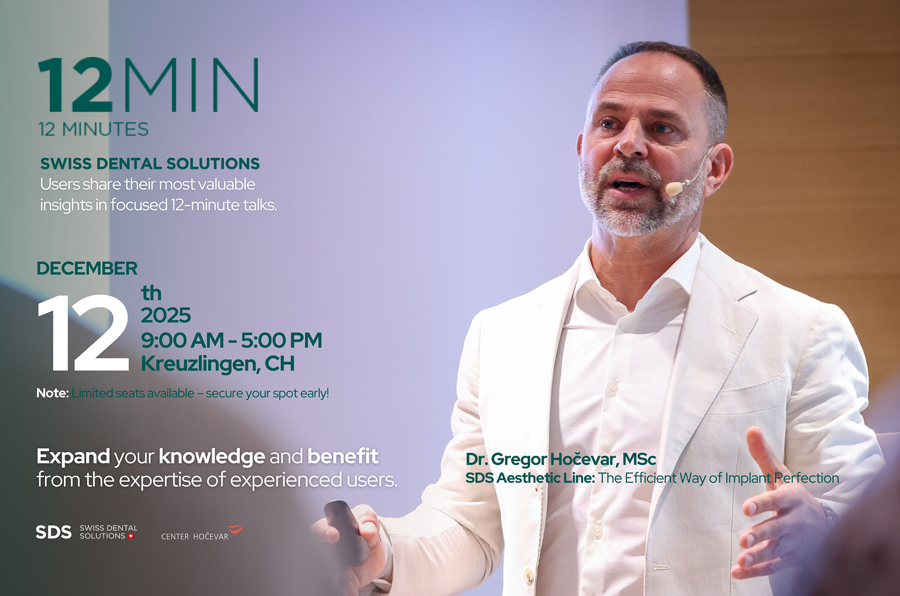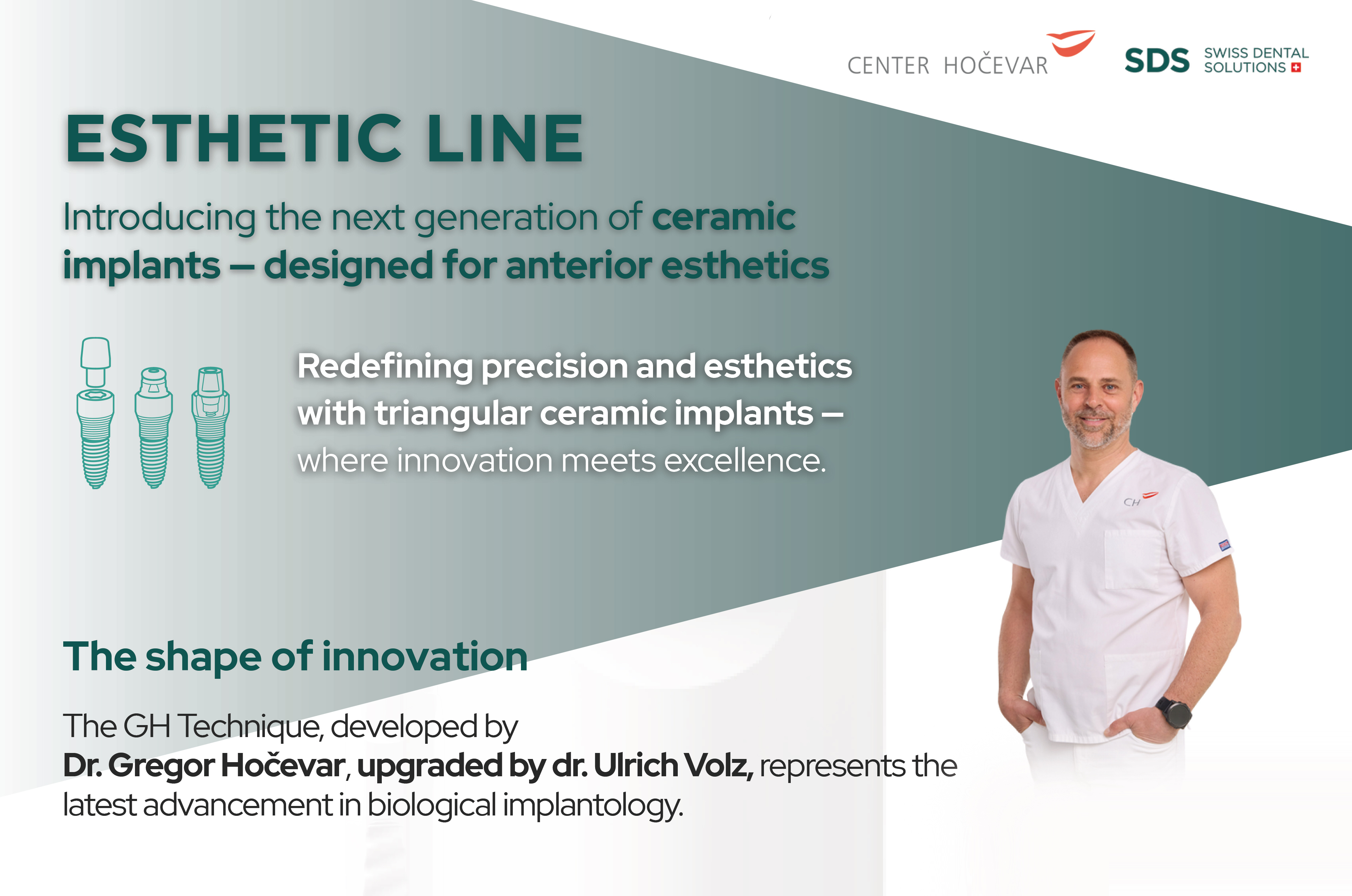Dr. Hočevar, what are the advantages of ceramic implants?
The main difference between ceramic and titanium implants is that ceramic implants are not metal implants. They are made of strong solid ceramic, zirconium dioxide. They are biocompatible, meaning the body accepts them, and they are bio-inert, meaning that the surrounding tissue will not have a negative reaction to their presence. And unlike metal implants, they are completely white.
Upon hearing ceramic, most people tend to think of chipped teacups; material that is easily chipped or broken. Is there a chance that an implant will chip or break?
Many patients and even some dentists have similar doubts – that there hasn’t been sufficient research, they are not functional, they chip and break… Early ceramic implants were in fact fragile and such concerns were justified. But such problems have since been eliminated and the ceramic implants currently available on the market have undergone various tests and standards that prove they are even stronger than titanium implants.
How about their insertion?
An advantage of ceramic implants is that in most cases (80-85%), they can be inserted into the jaw immediately after a tooth extraction and wound disinfection and sterilization.
Does it require special knowledge for a dentist to insert ceramic implants?
The insertion of a ceramic implant is somewhat different to the insertion of a titanium implant, so additional knowledge is necessary.
How can patients check if their dentist has such knowledge?
I believe that all dentists use materials and techniques they are familiar with and experienced in. If a dentist doesn’t excel at or isn’t familiar with inserting a ceramic implant, they most likely won’t even offer them. You have to trust your gut.
What about the price – are titanium and ceramic implants comparable in price?
Unfortunately, ceramic implants are more expensive than titanium ones. The main reason is that they aren’t as popular and there are fewer manufacturers on the market. Titanium is mass-produced, so the purchase price is a good deal lower.
You mentioned that a ceramic implant immediately follows a tooth extraction. Then we still save some money, don’t we?
True, but what you’re mostly saving is time. When the ceramic implant is immediately inserted into the wound, you avoid having to return to your dentist for the titanium implant to be inserted – which you would be charged for. However, the end price of ceramic implants is unfortunately still higher due to the high purchase price of the implant itself.
Does this mean that we can expect the price to drop if ceramic becomes more popular in the future?
Ceramic has been in production for about twenty years. Its use has increased in the last few years, mainly in German speaking countries (Germany, Switzerland, Austria, etc.), so sooner or later, the number of providers of ceramic implants will increase as well.
What about replacing the dental arch – so all teeth, could ceramic be used for that as well?
Of course, everything in dentistry that is done with titanium can be done with ceramic, which includes the whole jaw line with four to six implants.
You’ve mentioned Germany and Switzerland as the two countries with the most insertions of ceramic implants. Can you give us a percentage?
My assessment is around 5 to 10%. But this percentage is rising. Since the establishment of the Center, I’ve been working closely with a clinic in Switzerland – three years come May. The clinic organizes training and seminars for German and English-speaking dentists; I was among the first dentists to complete specialization there. I have witnessed the number of participants increasing firsthand in the last few years. Three years ago, there were ten to fifteen of us, and now there are groups of sixty to seventy dentists. So, I believe this percentage will increase in the next five to ten years.
[R1]It’s up to you what you’d like to call yourself here, this is just my suggestion. You could also say ‘leader’ or ‘president’ or ‘owner’, for instance.


















